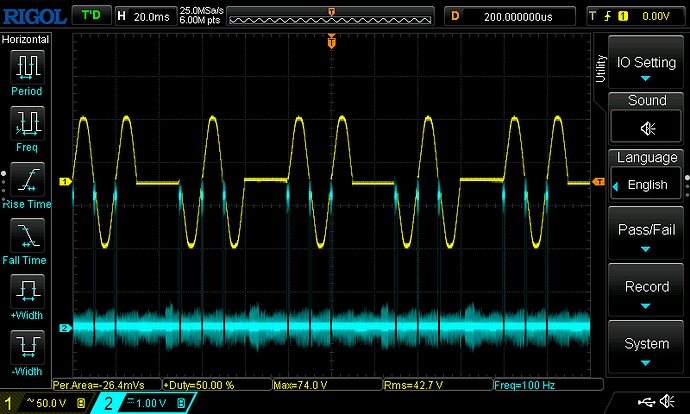Or, 60% like this, with less flicker:
You don’t need to take the trigger away - you can leave it on as per my diagram above - until after the start of the last half-cycle you want the triac to be conducting. This way, it will trigger the triac as soon as possible on each half-cycle. Remember, the zero-crossing driver functions by preventing the gate drive from reaching the triac until the next zero crossing (provided it is not already conducting).
Your software algorithm needs to prevent accidental rectification, i.e. over time, the number of positive and negative half-cycles should be equal. What you have there is OK - you have a 25 Hz sub-harmonic component.
Yes, I am aware I can leave the trigger on, but like this I can track all the pulses more easily.
I tested it again with 2.5kW load and it works as expected, only the triac heatsink gets too hot: 90 degrees C. What is the expected normal working temp for BTA41?
What does your data sheet say? Mine says:
“Operating junction temperature range: - 40 to + 125 °C”
From that junction temperature you need to work backwards knowing (or estimating) the power being dissipated and the junction to case, the case to heatsink and the heatsink to ambient thermal resistances in order to ensure the operating temperature at the junction is not exceeded.
With a heatsink temperature of 90 °C, my guess would be you are close to if not above the maximum operating temperature. You really need to know the case temperature.
There is no need for sarcasm, capital letters and exclamation marks, it’s just rude. I know what datasheet says, I asked this question here because there are hopefully people who already did this calculation for burst mode, so that I don’t have to design everything from scratch.
I see no sarcasm, capital letters, exclamation marks or rudeness.
Robert is a very “matter of fact” kinda guy, just trying to help you, for free.
Answer his questions and your project will be complete much faster and more safely.
